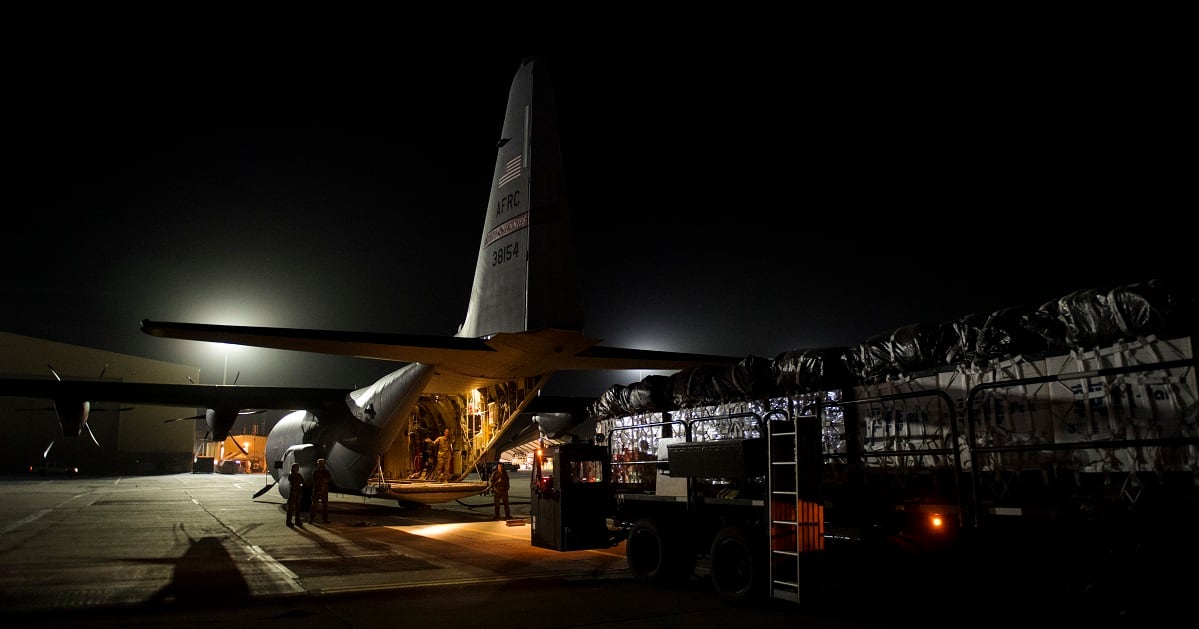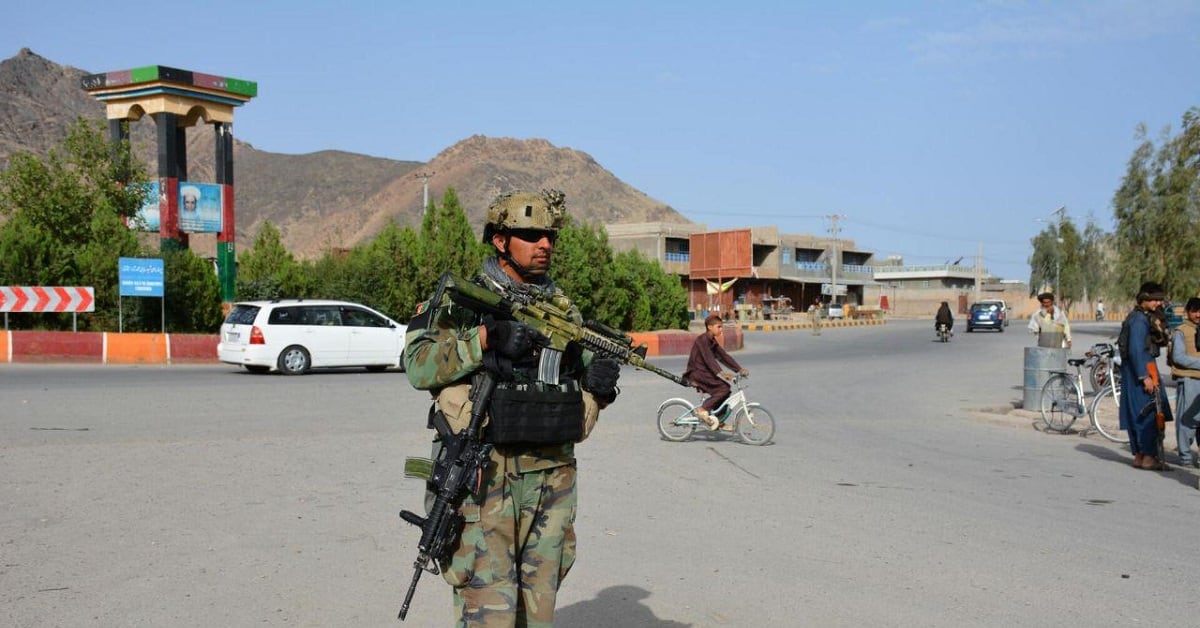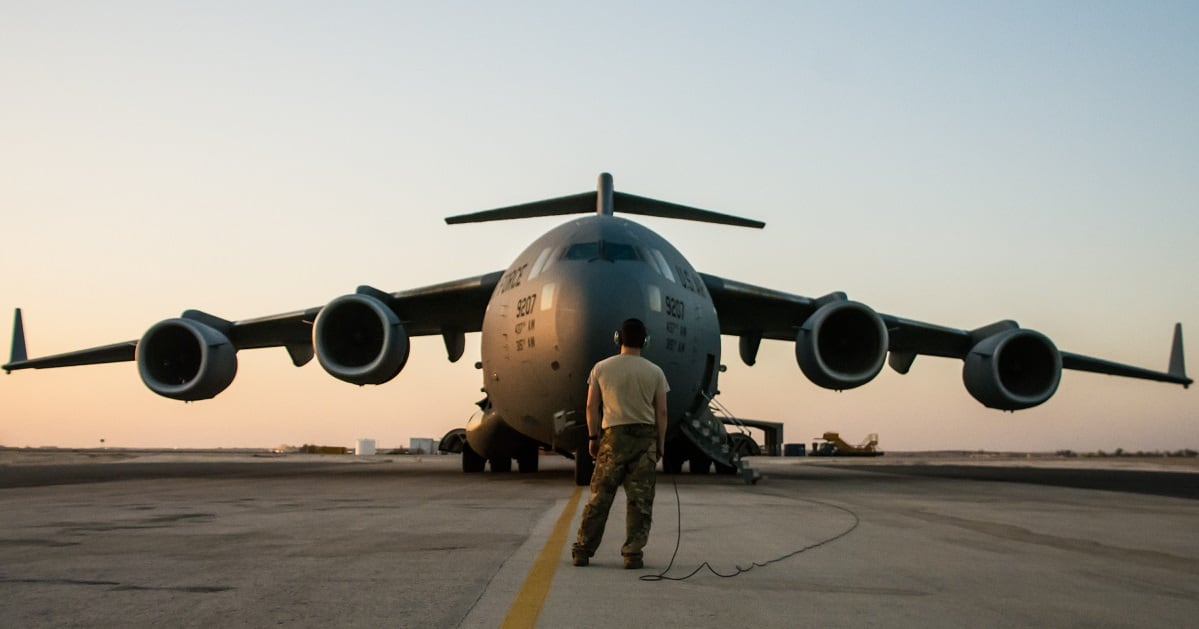The Taliban continue to threaten Afghanistan’s provincial capitals, particularly Ghazni and Farah cities, both of which came under siege during the 2018 fighting season, according to the Department of Defense Inspector General.
Although those attacks were repelled, the insurgents have reconstituted their forces in rural districts and continue to attack, and in some cases control, major traffic routes in the country.
U.S. supplies being airdropped into Afghanistan also skyrocketed in 2018, growing nearly 20-fold. In 2017, 33,423 pounds of supplies were airdropped into the country. That increased to 667,880 pounds in 2018, according to Air Forces Central Command figures.
The increase in airdrops represents a joint effort.
On May 10-11, for example, a C-17 with the 816th Expeditionary Airlift Squadron, based at Al Udeid Air Base in Qatar, completed the first combat-airdrop mission in 18 months over southern Afghanistan. U.S. soldiers augmented the airmen by preparing the airdrop pallets at Bagram Air Base, Afghanistan.
“Our tasking and the aircraft selection for this mission really comes down to the C-17’s larger cargo capacity,” Maj. Nicholas Coblio, a mission aircraft commander from the 816th Expeditionary Airlift Squadron, said in an AFCENT news release.
“The C-17 can complete this mission with one aircraft in one pass, minimizing risk and maximizing productivity,” Coblio said.
The road not taken
The increased reliance on airdrops over road deliveries in 2018 coincided with large Taliban assaults against Farah city in May and Ghazni city in August.
In both cases, the Taliban were repelled by a mix of U.S. special operations forces and fixed-wing and rotary-wing assets. The American close-air support was critical in pushing back the insurgents, who momentarily captured portions of the cities.
However, the Taliban remain active around urban centers in the country, and since the Ghazni city attack in August, the insurgency has regenerated its forces in the province, according to a DoD IG report chronicling the final quarter of 2018.
In Ghazni, at least two Americans, an airman and a soldier, were wounded during the August attack. The commander of the Afghan National Army’s 203rd Corps, told Time magazine that 112 Afghan government military and police were killed, with another 56 wounded.

Meanwhile, U.S. forces conducted 32 airstrikes, killing more than 220 Taliban fighters between Aug. 10-13, while clearing operations pushed insurgents out of the city, according to U.S. Forces-Afghanistan, or USFOR-A.
These figures led U.S. officials to label the Taliban offensive as a military failure for the Taliban, but a “strategic victory in the information space," DoD IG officials said.
While the Taliban were able to film themselves brazenly walking in open markets deep within an urban area, the success was fleeting. USFOR-A said the Taliban benefit from the media attention their attacks generate, according to the report. The command also warned that insurgents intend to conduct more attacks against provincial centers, despite ongoing peace talks.
Insurgent activity held steady throughout the year. More than 2,500 enemy-initiated attacks resulted in casualties in the final quarter of 2018, a nearly 10 percent increase compared to the same quarter in 2017.
RELATED

Ghazni province is in Afghanistan’s east, but the Taliban are also active in the far western province of Farah. USFOR-A told DoD IG officials that the Taliban maintain a “strong, but not overwhelming” presence in the more rural districts surrounding Farah city.
Throughout the final quarter of 2018, the Taliban continued to attack Afghan government outposts, major traffic routes and an airfield, according to the DoD IG.
“Ghazni city appears to be particularly vulnerable to another Taliban attack,” DoD IG officials said. “USFOR-A told the DoD IG that since the Ghazni city attack in August, the Taliban reconstituted its forces in the province. The Taliban maintain a presence on the outskirts of the city and control major transportation routes in the province.”

In November, three U.S. troops were killed by a large roadside bomb in Ghazni province’s Andar district while driving out on a mission. A fourth American soldier ultimately died in December from the wounds he suffered in the blast.
Ghazni and Farah cities aren’t alone in being under threat. USFOR-A said that the capitals of Kunduz and Uruzgan provinces also remain vulnerable to Taliban attack.
Local Afghan media have reported that the Taliban continue to attack Afghan government forces on the roads leading to the Faryab provincial capital of Maimanah, in Afghanistan’s north, DoD IG officials said in the report.
Recognizing the incoming threats as winter bleeds into the 2019 summer fighting season, U.S. and Afghan leaders have made security enhancements that include a new forward operating base and new security leadership in Farah province, as well as more engagements between Afghan government and coalition forces in Ghazni.
Kyle Rempfer was an editor and reporter who has covered combat operations, criminal cases, foreign military assistance and training accidents. Before entering journalism, Kyle served in U.S. Air Force Special Tactics and deployed in 2014 to Paktika Province, Afghanistan, and Baghdad, Iraq.




